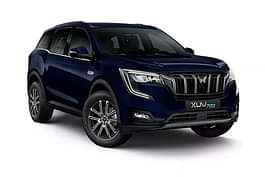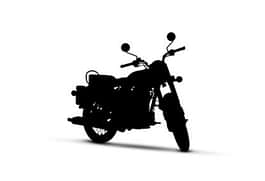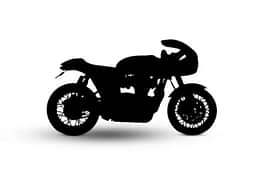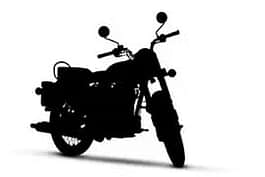
Are you confused regarding which braking system to choose? Need not worry. We have put together an article on disc brakes vs V-brakes for your reference!
The invention of the bicycle in the 1800s was just a mere start for an eternity of inventions. The simple mechanical equipment that was once a plaything has now turned into a complex entity and a means of transport. Inevitably, time progressed to an extent that the complex mechanical components of a bicycle became a necessity by all standards. Today, like many components that we speak of, the brakes have become a hot topic of discussion.
Unlike the "Dandy Horse" cycle that lacked pedals, steering mechanisms and brakes, today, bicycles cannot run on such construction. The primary component that bicycles need is a steering and braking system. Quite an obvious statement, however, it is just to signify the importance of it. Hence, the first type of brakes to be used on a bicycle with pedals is a spoon brake which as time progressed became duck brakes and much more. Nowadays, we are quite familiar with the disc brakes and V-brakes that are popularly seen equipped on bicycles.
Since the topic of discussion is bicycle brakes, let us discuss everything regarding it through this "Disc Brakes vs V Brakes" article. Here is everything you need to know:
Bicycle Disc Brakes vs V-Brakes:

What are Disc Brakes?
A bicycle's disc brakes consist of a metal disc also called a rotor that is attached to the wheel hub. It rotates with the wheels. Also, there are calipers attached to the frame or more precisely the fork of a bicycle. They have pads made of robust material that presses the rotors for braking efficiently. The calipers are actuated mechanically with the help of a cable or hydraulically with the help of fluid pressure. Disc brakes are commonly seen equipped on mountain bikes and also on Hybrid bikes.
Also Read: Hydraulic Vs Mechanical Bicycle Disc Brakes. Which Brake Is Better?
Advantages of Disc Brakes:
Stopping power:
The inevitable truth regarding disc brakes is that it allows one to stop over a short distance quite efficiently especially during a panic situation. It provides stability too.
Snow/wet weather braking:
Unlike, V brakes, disc brakes have the ability to function optimally even while it is raining or snowing. Rim brakes and V brakes are prone to squeal when they come in contact with water and in situations when you are riding downhill, they can fail to function. Therefore, disc brakes are recommended by experts as they have the ability to function smoothly and slick, even in wet weather conditions.
Tyre size:
Bicycles with caliper or V brakes have certain limitations when it comes to tyre sizes. Caliper brakes are limited somewhere in the 28mm tyre size category, however, disc brakes do not have such limitations. This allows Bicycle frame makers to design and manufacture bicycles fully capable of equipping bigger sized tyres. It can significantly increase traction and add comfort for the rider.
Also Read: Here Is A Beginner's Guide For Buying A Cycle In India
Wearing of rims:
Rim Brakes and V brakes are prone to wear down quickly onto the rim, this reduces the stopping power of the brakes and the overall life of the rims. In fact, aluminium wheels are quite strong but they too tend to wear down with constant braking. Also, carbon rims too wear down quickly due to heat generated by the V brakes. On the other hand, disc brakes remove all of the heat generated on the rim. The robust rotors take on the heat and friction instead of rims when it comes to a disc brake setup.
Also Read: Check Out This Beginners Guide For Trail Cycling And Off-Roading

Disadvantages of Disc Brakes:
1. Disc brakes tend to be heavier than V brakes or rim brakes and are on the expensive side too.
2. To equip a bicycle with disc brakes, the fork of the bicycle needs to be disc brake compatible.
3. Disc brakes can place stress on the spokes of the bicycle wheel if used for a long time like when touring.
4. Disc brakes can make the process of mounting a rear kickstand quite hectic due to its wiring and other components and they also require regular maintenance, unlike V brakes.
Keeping reading the "Bicycle Disc Brakes vs V Brakes" article to know more about the braking system.
Also Read: PPF Vs Ceramic Coating - Which is Better?
What are V-Brakes?
V-brakes are also known as linear-pull brakes or direct-pull brakes that are cantilever type brake systems. The V-brakes basically work by mounting on the bosses located on the frame. They have long arms and a cable remains attached to one arm and the cable housing to the other. They are quite efficient in dry weather conditions and have good stopping power. V-brakes also do not need an isolated cable stop on the fork, they work well with the suspension systems present on several mountain bikes.
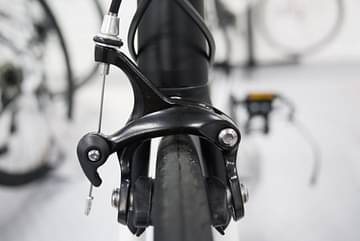
Advantages of V-Brakes:
Availability of Parts:
The biggest advantage of having a V brake-equipped bicycle is that its components are easily available around the globe. They are cheap to maintain and replace in case of wear and tear.
Easy To Maintain:
V Brakes are quite easy to maintain even on the go. In case of failure, the components can be replaced easily as they do not have the complexity of a disc brake system that is actuated by hydraulic or mechanical components.
No strain on hubs or spokes:
Unlike disc brakes that heat up quickly and transmit heat onto the hubs and spokes, V brakes do not place stress on the hubs as well as the spokes. Therefore, as the wheel and its components do not heat up, the spokes and hub of bicycles with V brakes tend to have a longer life.
No hindrance to other components:
Since the bicycle V brakes are placed on the upper section of the frame, unlike disc brakes that are mounted near the hubs, they do not hinder the placement of a kickstand on bicycles.
Also Read: Check Out The 5 Best Bicycle Maintenance Tips in Monsoon
Disadvantages of V Brakes: (Bicycle Disc Brakes vs V-Brakes)
1. V Brakes causes the rims to wear down due to the constant heat transfer and friction.
2. The performance of braking is drastically compromised when it comes in contact with water or mud.
3. The brake shoes require regular maintenance and replacement.
What do you think about this article on Bicycle Disc Brakes vs V-Brakes? Do let us know through the comments section below. Join our 91Wheels Telegram and 91Wheels Whatsapp group to know more about vehicles, conduct discussions on your favourite ride and much more! Also, you can subscribe to our Youtube channel for video content on the latest from the world of cars and motorcycles.
